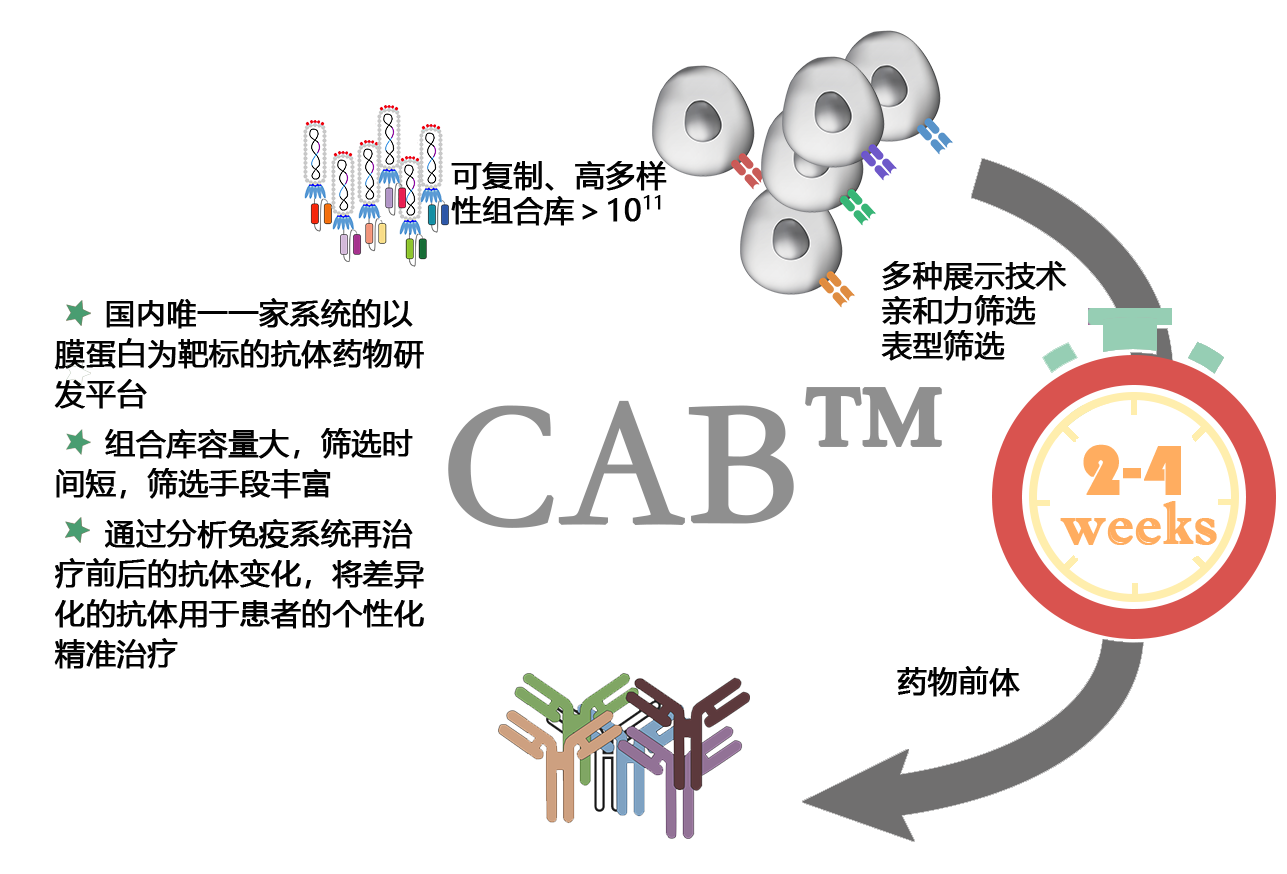CABTM technology represents antibody technology 3.0, which is the only rapid and effective new antibody discovery platform for cell membrane surface proteins, especially G-protein-coupled receptors, ion channels and other important drug target families in China, and also takes a leading position in the international antibody field. Compared with the first generation of antibody technology (hybridoma technology), this technology has the following characteristics and advantages: a variety of large capacity and diversity of combined antibody library (1011), It can basically cover the needs of all antigen recognition sites and structures (while the hybridoma technology of animal immunity, such as the use of humanized white mice for hybridoma antibody screening, can not cover all human antigen targets due to the diversity of the animal immune system and different species); It has a new generation of live cell function display screening method, which can screen and optimize the antibody sequence very quickly (2 - 4 weeks) (the hybridoma technology of animal immunity can screen monoclonal antibodies for at least 10 months); The construction of the combined antibody library is based on the human antibody molecular structure as a template. The obtained antibody molecules do not need to be humanized, which greatly reduces the cost of antibody screening (if the animals used in the hybridoma technology are not humanized, the antibodies screened need to be humanized).
As shown in the figure:

Illustration Characteristics of CABTM new antibody discovery platform
On the other hand, CABTM technology includes optimization and automatic construction of combinatorial antibody library. At present, we have successfully constructed several individual in vitro combined antibody libraries, which can monitor the immune response of individuals in real time, and have great and breakthrough significance for precision medicine and the big health industry.

 HOME
HOME




